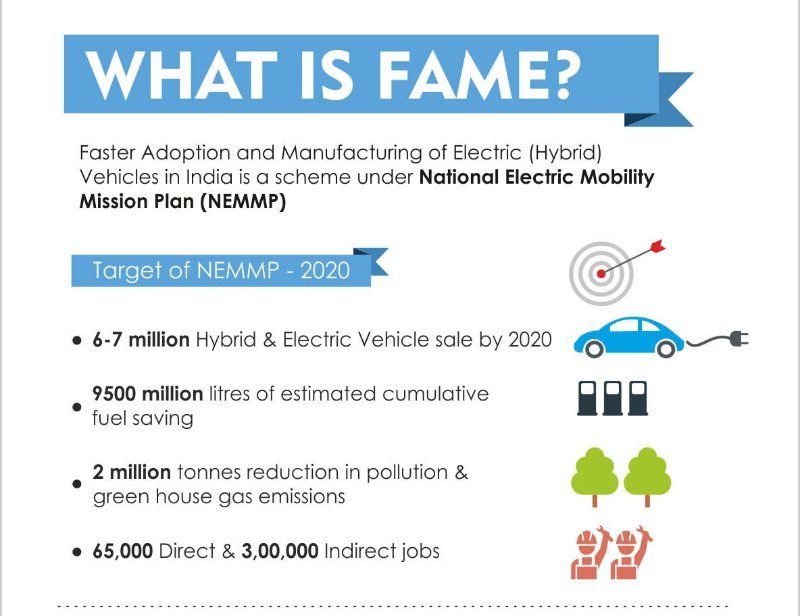The FAME India scheme is designed to encourage electric vehicle manufacturers and related industries to increase the production of electric vehicles within the country. Its goal is to have 30% of all transportation vehicles converted to electric by 2030. The scheme is divided into two phases.
In Phase I, a total of INR 359 crores was allocated to assist 280,000 electric vehicles.

The current phase, called FAME II, has a budget of INR 10,000 crores and aims to promote the use of electric vehicles in public and shared transportation. The deadline for this scheme is March 31, 2024. There are discussions about a possible future scheme, FAME III, which may include funding for new technologies and categories that were not included in previous phases.
The Phase-II of the FAME Scheme aimed to support 1,562,090 vehicles within 5 years. However, as of August 2, 2023, only 55.88% (872,920 vehicles) of the target has been achieved. Since the allocated budget for electric two-wheelers under FAME II has been used up, an additional budget of approximately 3500cr was allocated at the start of FY24.

The goal for E3Ws is to reach 500,000 units, but as of August 2, 2023, only 18% of the target has been achieved. So the budget allocated for E3Ws is also being used for Electric Buses and E2Ws.
The low number of E3Ws being purchased suggests that buyers are hesitant because of the higher initial cost compared to traditional vehicles with internal combustion engines.

The government has successfully achieved E-bus target under FAME II by deploying overall 7210 E-buses across the country.
The FAME policies in India have played a crucial role in making electric vehicles (EVs) more affordable and promoting local manufacturing. However, it is important to find alternative methods to reduce the price difference as government subsidies cannot last forever. With the right government support and better charging infrastructure, India can increase its adoption of EVs.
Reference- JMK Research Newsletter, Press Information Bureau Feed, India Today, Mercom India






